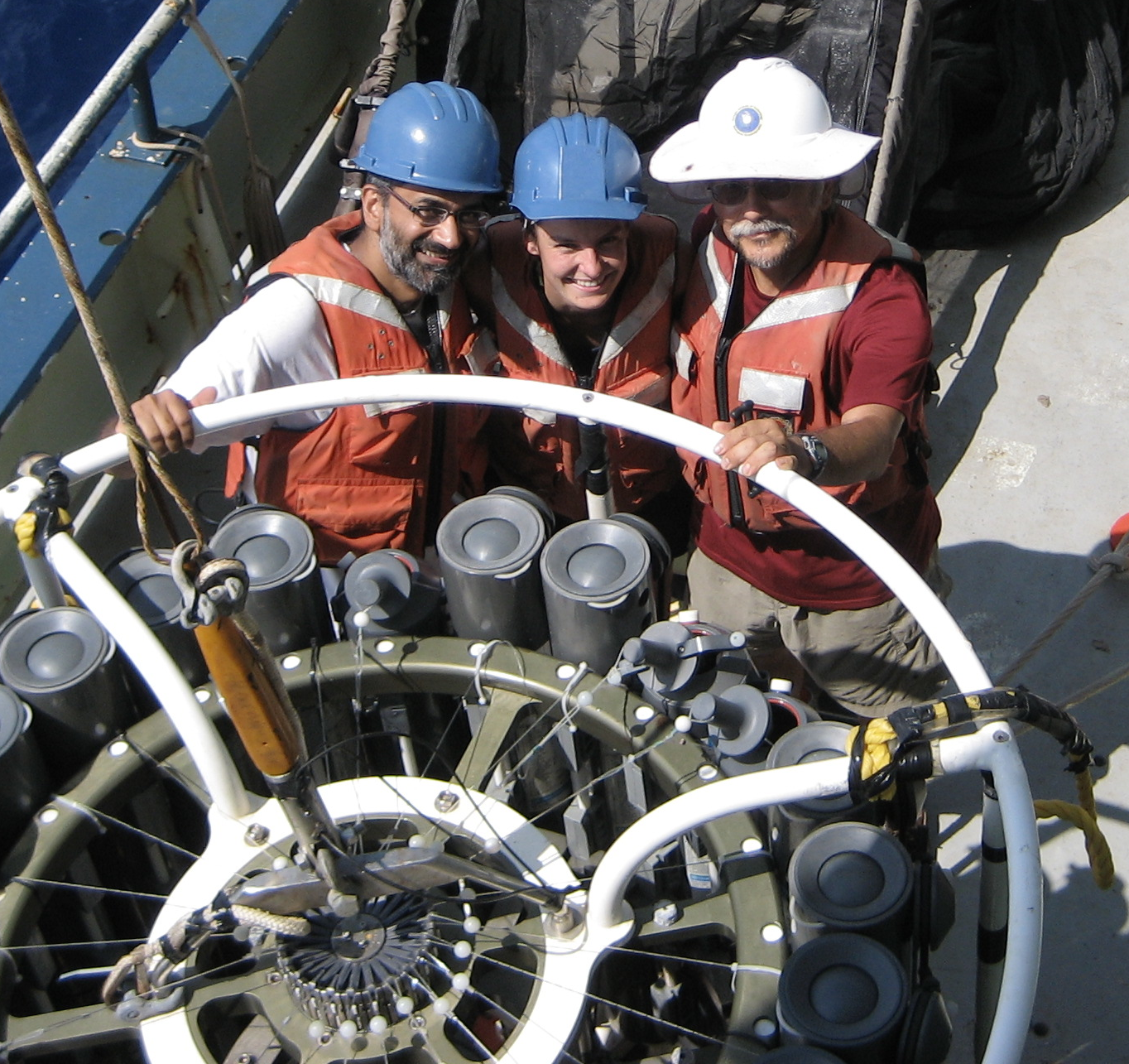Impact of the Amazon River Plume on nitrogen availability and planktonic food webs in the Western Tropical Atlantic Ocean
Ajit Subramaniam
SUPPORTED BY NSF DIVISION OF OCEAN SCIENCES AWARD #1737128
Originally presented 23 Jan 2021
Ajit is a Lamont Research Professor in the Biology and Paleoenvironment Division. He presented about his research in the Equatorial Atlantic off the Amazon in the January 2018 E2C and April 2020, and now returns to provide updated information discovered in his continuing research projects.
INTRODUCTORY SLIDE SHOW (.pptx)
INTRODUCTORY SLIDE SHOW (.pdf)
View the slideshow for this presentation.
View monthly chlorophyll concentrations
View animations from the Darwin Project

The ten largest rivers in the world contribute 38% of all riverine input into the oceans. Their plumes extend 100’s to 1000’s of kilometers offshore and are important conduits for terrigenous nutrients to the oceans. Direct anthropogenic activity through land and water use change as well as indirect climate change effects are altering the chemistry of these rivers and consequently the marine ecosystem influenced by the plumes. We have to understand the biogeochemical cycles affected by these river plumes in order to predict changes to the marine ecosystem in the future. Techniques for detection and mapping of these river plumes will be presented. Mapping the plumes allows us to understand short term and long term changes. We will also discuss the supply of nutrients and how affects primary productivity and structure of microbial populations in the river plumes.
At the end of the session, we will develop a common understanding of:
1) The distribution of large river plumes in the ocean,
2) How processes happening on land affect microbial communities in the ocean, and
3) Remote sensing techniques used to map river plumes in the ocean

Ajit Subramaniam is a Lamont Research Professor who first presented an Earth2Class Workshop in 2004, and has been a good friend to this program through the years. You can find out more about Ajit’s accomplishments on his home page.
Previous E2C Workshops presented by Ajit
“PIRANAs and PIRATAs Remote Sensing the Amazon River Plume” (Oct 2004)
“From Satellites to Microscopes: Studying Phytoplankton” with Andrew Juhl (Nov 2005)
“Great Rivers and Changing Oceans” (13 Jan 2018)
Related Research
“Amazon River Drives Carbon Sink” (Proc. Nat. Acad. Sci., v. 105, no. 30, pp. 10271 – 10632)
Sonya Dyrhman’s Microbial Oceanography Group at LDEO
“Ocean Color and River Data Reveal Fluvial Influence in Coastal Waters” EOS, v. 82, no. 20, pp. 221 – 232.
“Plankton Biomass and Productivity in the Amazon River Plume: Correlation with Seasonal River Discharge” Continental Shelf Research, v. 16, pp. 291 – 319
“Replacing the Nile: Are Anthropogenic Nutrients Providing the Fertility Once Brought to the Mediterranean by a Great River?” Ambio Vol. 32 No. 1, Feb. 2003
“Blame it on the Rain: Study ties phosphorus loading in lakes to extreme precipitation events” NSP Discoveries Jan 11, 2018.
Committee on Earth Observation Satellites
A Consumer’s Guide to Satellite Remote Sensing of Multiple Phytoplankton Groups in the Global Ocean
Activities:
Food Web Activity
https://askabiologist.asu.edu/fr/experiments/plankton
Visit to and Ocean Planet: Plankton Identification
https://sealevel.jpl.nasa.gov/files/archive/activities/ts3ssac3.pdf
Phytoplankton in Your Classroom
http://coseenow.net/mare/phytoplankton-in-your-classroom/
MORE WILL BE ADDED SOON



